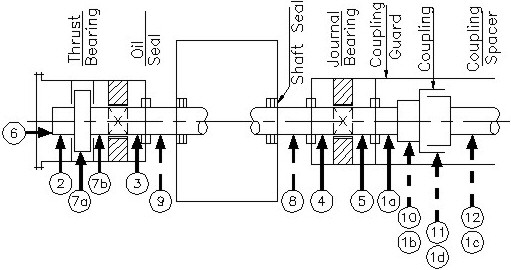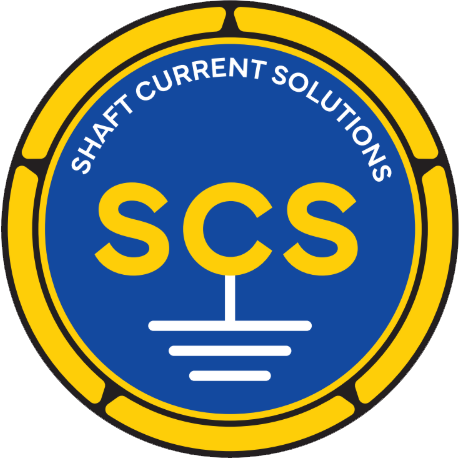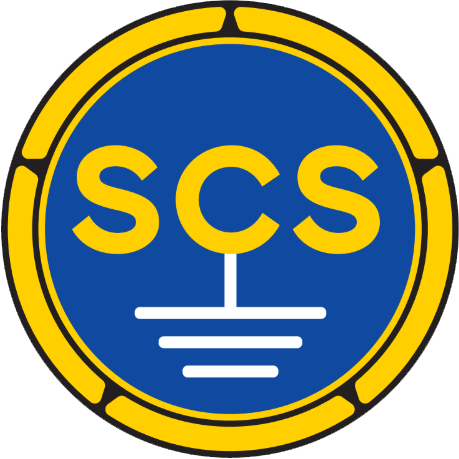Installation
Typical Mounting Locations for Shaft Brushes
Caution: Run brush only on surfaces made of carbon steel or low alloy steel. Never on Aluminum, Titanium, Austenitic Stainless Steel or any material having poor wear characteristics.
Never: run a brush on a highly stressed surface, especially if vibratory stresses are present. Example: Quill-Shafts, hollow coupling spacers, areas of stress concentration.

Locations are shown in sequence of desirability (effectiveness, serviceability, environment, protection against damage).
(1a) Between coupling hub and bearing case, mounted on coupling guard.
With integral coupling hub only.
(1b) Riding on coupling hub. With conducting coupling only (such as “Flex-Disk” or “Diaphragm” Type), plus integral hub.
(1c) Riding on coupling spacer.
(1d) Riding on coupling O.D. (check surface velocity).
(Arrangements 1a, 1b and 1c may need oil spray for cooling or lubrication).
(2; 3; 4; 5) In bearing case, between bearing and outer seal. Mounted on bearing case. Mounted in out-board bearing end cover.
(7a) On O.D. of integral thrust collar. Check windage, oil stream and velocity (less than 500 ft/sec (150 m/sec).
(7b) Between thrust bearing and journal bearing.
All the above are good locations. If no such location is feasible, the following may be considered, with precautions:
(8; 9) Between gas (steam) seal and bearing case. Possible disadvantages:
- Poor surface finish and rust.
- Exposed environment.
- Abrasive particles in the air.
- Hot steam or gas blowing against brush from one side, oil leakage from other, causing gumming and coking.
- Lack of reliable oil lubrication.
The other end of the machine, having more moderate operating conditions, is preferred.
(10) On shrunk-on coupling hub. Possible problems:
- Heating hub if currents are excessive, hub may come loose.
- Spot-welding of hub to the shaft, if currents are high.
- Unreliable electrical contact from hub to shaft, especially after fretting and/or corrosion has occurred, and/or high currents have passed.
(11; 12) On coupling sleeve or spacer shaft. Problems as above, plus:
Currents must pass through coupling teeth. This may cause teeth deterioration with consequent coupling lockup, vibration, and possible failure of coupling, and/or thrust bearing.
Important: Problems with (11) and (12) will not occur with conducting couplings, for example diaphragm (Flex-Disk or Membrane) types.
Comments and precautions for arrangements (8) to (12):
While these arrangements have definite disadvantages compared to arrangements (1) to (7), having no brush at all would be worse because the currents would then pass through teeth and shrink fits anyway, doing the same damage— or worse. With a brush where the current can at least be monitored, the unit can be shut down for demagnetization if currents become excessive. Without brushes there would be no warning until damage is extensive.
Order of preference of brush types to be used:
Type L: (toothbrush type) Most desirable, where space allows.
Type S: (toothbrush type) For restricted space.
Type A: (plunger type) For field retrofit or where type L or S cannot be accommodated.
Type LW: For large turbine-generators or propeller shafts.


